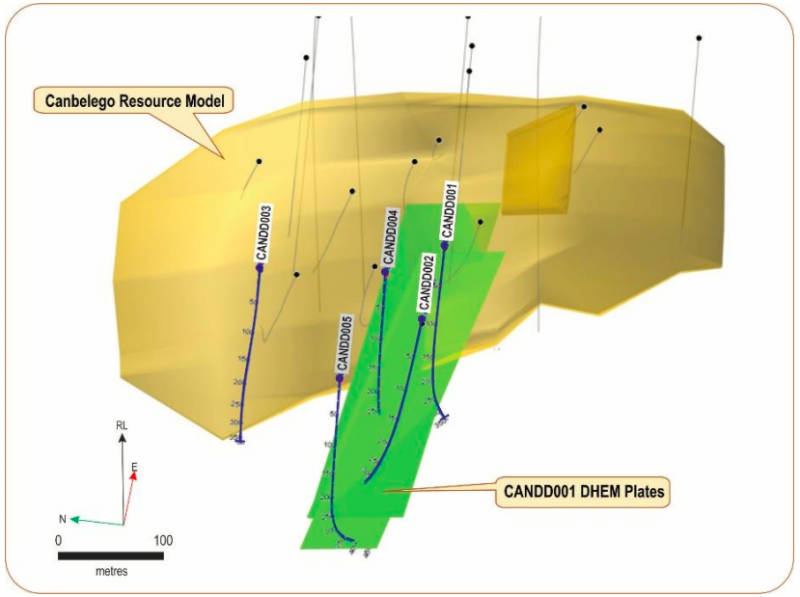Conductors are a signpost for copper at Helix’s Canbelgo project

Pic: Bloomberg Creative / Bloomberg Creative Photos via Getty Images
Helix has identified potential high-grade massive copper sulphide targets at its Canbelgo project after down-hole electromagnetic surveys defined strong EM conductors.
The off-hole conductors are interpreted to relate to high-grade copper sulphide mineralisation and warrant immediate follow-up drill testing, lending support to the company’s note late last month that it is getting a handle on Canbelgo mineralisation.
Helix Resources (ASX:HLX) is currently progressing surface moving-loop EM surveys to refine existing airborne EM anomalies and provide drill targets for later testing.
“Chalcopyrite, a primary copper sulphide mineral, is often conductive and geophysical techniques such as electromagnetic surveys, either airborne, surface or downhole have proven to be very effective in finding copper mineralisation in the Cobar region,” managing director Mike Rosenstreich said.
“The Helix team is using EM with great success to identify the broader structures such as the north-south copper lode at Canbelego and then vectoring in on the high-grade shoots with powerful DHEM surveys.
“This worked well with CANDD001 which intersected typical Canbelego copper sulphides and the DHEM led to the exciting copper sulphide hit in the nearby CANDD002, which we consider is a high-grade shoot – in this case the Central Shoot.
“We hope that DHEM on CANDD003, which also hit typical Canbelego copper sulphides, will provide a similar vector to massive sulphides in the North Shoot.”
The company is currently drilling a fourth hole to test the Central shoot above the CANDD002 intercept about 40m north along strike from the CANDD001 intercept while a fifth hole has been planned and approved by the joint venture to test further down plunge on the Central Shoot.

DHEM conductors
Modelling of DHEM data from all three holes drilled to date indicates that the conductor targets represent a series of ‘dip continuous’, stacked shoot positions within a broader north-south trending late-stage copper mineralised structure.
The DHEM survey at CANDD001 defined a strong conductor centred just above and extending north of the hole that is about 70m and has over 200m dip extent.
CANDD002 clearly intersected the conductor with the strong copper sulphide intercept related to the modelled DHEM conductor, which models at 70m width and over 125m depth extent.
Helix notes that this conductor is slightly stronger than the one at CANDD001, suggesting that conductance increases at depth.
The company added that initial modelling of data from CANDD003 indicates a clear, local, moderate to strong off-hole anomaly centred at 270m to 280m down hole.
Notably, the data suggests that the hole did not pass through the best part of the conductor.
A lower anomaly is also modelled south of the hole, which appears to extend down dip in the later DHEM readings.
Further modelling in conjunction with the other conductors identified in the other holes will assist in better refining drill targets in the geometry of these high-grade copper shoots.
This article was developed in collaboration with Helix Resources, a Stockhead advertiser at the time of publishing.
This article does not constitute financial product advice. You should consider obtaining independent advice before making any financial decisions.
Related Topics

UNLOCK INSIGHTS
Discover the untold stories of emerging ASX stocks.
Daily news and expert analysis, it's free to subscribe.
By proceeding, you confirm you understand that we handle personal information in accordance with our Privacy Policy.








